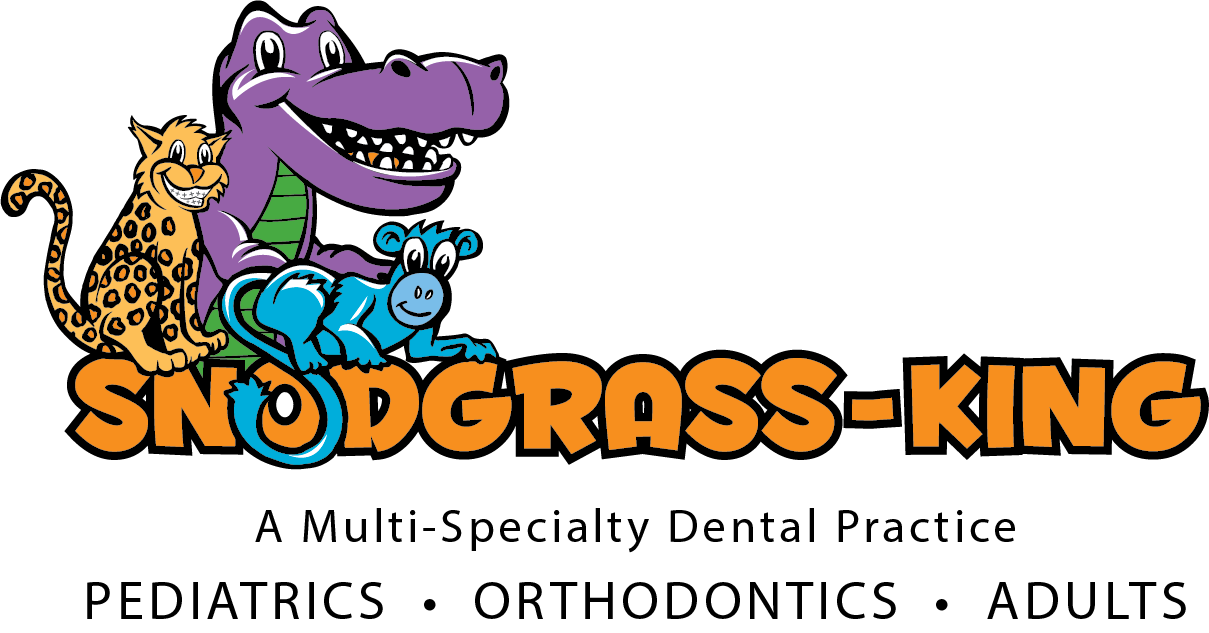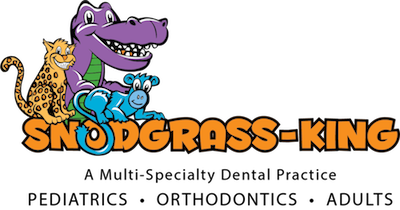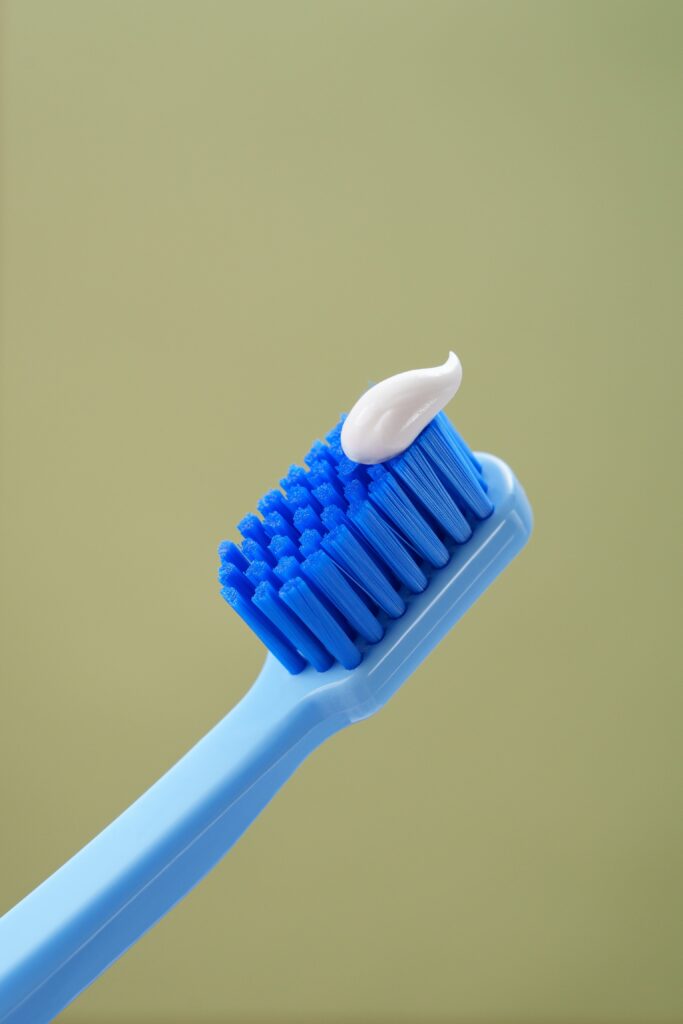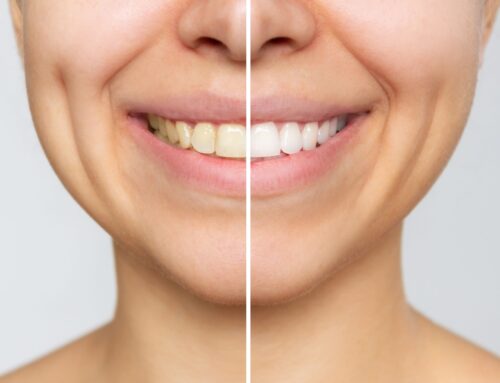How to Find the Right Toothbrush
At an early age, we’re taught the importance of brushing our teeth every day. However, many people don’t think about the quality of their toothbrush or toothpaste until it’s time to go to the drugstore to grab more.
Once at the store, many shoppers will consider the price and make a choice based solely on what’s available. However, with so many options available at the store, knowing how to choose the right toothpaste and toothbrush for you and your child can help keep your mouth cleaner and healthier.
When you use the right toothbrush and toothpaste for you, regular brushing will remove sugar, bacteria, plaque, and food particles more effectively. For the best oral hygiene, brush for two to three minutes at least twice daily, especially before bedtime.
To find out what is best for your mouth, check out the tips below to help you make good toothpaste and toothbrush choices.
How to Find the Right Toothbrush
Toothbrush Head Size
A toothbrush that is too big can cause strain on your jaw, and a toothbrush that is too small is just inefficient. If you find yourself struggling to open your mouth wide enough for the toothbrush, you should probably look at getting a toothbrush with a smaller head size.
This will most likely be a problem your child will encounter if not using toothbrushes geared toward kids. If your toothbrush is too small, it isn’t necessarily going to hurt you, but it will take you longer to sufficiently brush your teeth. Imagine trying to erase a whole page’s worth of notes with just the tiny eraser at the end of your pencil.
Basically, you have the right-sized toothbrush if the head is big enough to reach every tooth surface but small enough to reach your back molars and doesn’t cause any strain to your jaw while brushing.
Bristle Texture
Up next, let’s talk about bristles. There are three types of toothbrush bristles: hard, medium, and soft.
Soft Bristles
The majority of dentists can agree that soft bristles are the safest and most effective at getting rid of bacteria, plaque, and other unwanted substances on the surface of your teeth. Furthermore, if you or your child has super sensitive gums, extra soft-bristled toothbrushes are an option. If a patient really doesn’t want to use a soft bristle and prefers a medium bristle toothbrush, it will probably be okay.
Medium Bristles
Medium bristles can still effectively clean your teeth without causing significant damage, as long as you are mindful of your brushing technique. Regardless of the toothbrush you pick, it’s important to make sure that you’re not brushing too aggressively, as even medium bristles can cause gum recession and enamel wear if used with excessive force.
Hard Bristles
Hard-bristle toothbrushes are not always the best option for a variety of reasons. Some companies out there are still making toothbrushes with coarse bristles, which can weaken the enamel on your teeth and cause gum lesions. You may argue that these toothbrushes are cheaper and that it is better than not brushing your teeth at all, but just trust us – your teeth and your gums will thank you for going with a toothbrush that has soft bristles. Plus, they really aren’t that much more expensive.
When it comes to choosing the right toothbrush for you or your child, head size and bristle texture are the most important qualities. Improper sizing and harsh materials can both do a lot of unnecessary harm to your overall oral health. It’s essential to choose a toothbrush that fits properly and has soft bristles.
Toothbrush Grip, Shape, and Style
Beyond head size and bristle texture, there are additional elements to a toothbrush to keep in mind. When seeing options available for toothbrushes you may have questions like what is the right handle size?Does having a certain grip matter? What about wave-shaped or v-shaped bristles? For adults, the answer to these questions are: it’s up to you and what your personal preferences are. There is no scientific finding that proves a certain type of handle, grip, or bristle shape works better than the others. So whatever is more comfortable for you and allows you to fully reach and clean all surfaces of your teeth is the right toothbrush for you.
Pediatric dentists may recommend a larger handle and extra gripping for children, as they are generally easier to hold onto. Also, you will notice that most brands have age guides to determine which size is best for your child. However, every child is different and they may be more comfortable with a toothbrush that is technically outside of their age range. If you have any questions or a need for recommendations, you can always ask one of our dentists at Snodgrass-King Dental at your next visit.
Electric Toothbrushes or Manual Toothbrushes?
Technology has come a long way in the dental industry, including the development and advancement of electric toothbrushes. But are electric toothbrushes actually better than manual toothbrushes? Which is the right toothbrush for you? You might be surprised to find out there isn’t a massive difference between manual and electric toothbrushes.
The American Dental Association (ADA) states that both electric and manual toothbrushes are effective at removing oral plaque that causes decay and disease. However, an electric-powered toothbrush is a bit better at removing plaque and debris since the vibration lends to more micro-movements across your teeth and gums. Each type has its own set of benefits. It ultimately depends on your own or your child’s own specific needs.
Electric Toothbrushes
Electric toothbrushes are generally recommended for those with limited mobility, such as those with arthritis, carpal tunnel, and developmental disabilities. Additionally, most electric toothbrushes have timers built in. Two minutes seems like forever to children and it can be challenging to judge what two minutes feels like. If this is something you or your family struggle with, an electric toothbrush is a great option.
Other pros of electric toothbrushes include:
- Improved access of hard to reach places
- Customizable settings
- More thorough clean for some patients
If you opt for an electric toothbrush, look for one that rotates the head or oscillates instead of one that only vibrates. You’ll typically find two options for electronic toothbrushes: either rechargeable or ones with disposable batteries. The rechargeable options are a better value long-term, but disposable toothbrushes are more convenient if you don’t have a good place to plug in a charger in your bathroom.
Manual Toothbrushes
Manual toothbrushes have their own set of benefits as well. Some benefits to manual toothbrushes include:
- Affordability
- Availability
- Strong level of control
The most prevalent benefit being affordability and availability. Electric toothbrushes can cost up to $250 per brush and then more for the replacement heads. On the other hand, manual toothbrushes generally only cost $1-$3 per brush. Plus, you can find them pretty much anywhere. From grocery stores to gas stations and even pharmacies. Electric toothbrushes are usually only found at select retailers and sometimes you may have to get them directly from your dentist.
Determining if you should get an electric or manual toothbrush depends on the oral hygiene needs, and wants, of your family.If an electric toothbrush could help your family develop healthier oral habits and it fits within your budget, then go for it.
If you have a tighter budget and your family has already developed a solid brushing and flossing routine, then don’t fret.
How to Choose the Right Toothpaste for You
Now that we’ve explained how to choose the right toothbrush, it’s time to talk about toothpaste. If you have children and adults in your family, you’ll need to buy more than one product. Because, when it comes to toothpaste, there’s no one size fits all product.
How to Choose Toothpaste for Children
When choosing children’s toothpaste, you should choose a product that contains fluoride. Additionally, look for a toothpaste with a flavor your child will enjoy. If you’ve ever tried to give a toddler something that doesn’t taste good, you know how important it is to find a flavor that tastes good to them.
You should also brush your baby’s teeth, but don’t give them fluoride toothpaste until around the age of two. Your pediatrician or pediatric dentist will apply fluoride with your approval. Make sure only one provider is applying fluoride, overdoing it can cause spots on the surface of teeth.
Fluoride is important for brushing teeth, but it should never be swallowed. Since babies have a hard time not swallowing what’s in their mouth, it’s best to stay away from fluoride until they can spit out the toothpaste. So, while they are infants, brush their teeth with clean water.
For additional advice, please contact your child’s dentist.
How to Choose Toothpaste for Adults
For adults, choosing a tube of toothpaste is a bit less complicated, but there are still a ton of choices to wade through. To make your choices easier, you need to take a look at the benefits provided by a specific product. For instance, if you want a whitening product, look for a toothpaste with whitening benefits. The same scenario applies if you have sensitive teeth.
Additionally, look at the list of ingredients on the toothpaste package to know what flavoring, sweeteners, and other chemicals it contains. If the list is particularly long, there is a greater chance you will develop tooth sensitivity. To stay on the safe side, choose toothpaste with a shorter list of ingredients.
Look for toothpaste that has these ingredients and traits:
- Fluoride: Contains anti-cavity properties and strengthens tooth enamel to fight tooth decay.
- Tartar control: Prevents a buildup of calcified plaque on teeth, which can result in a yellowish discoloration.
- Anti-gingivitis properties: Contains antibacterial properties that fight gum disease.
- Desensitizing properties: Soothes nerves in the mouth and blocks tubules in the dentin to prevent tooth pain; for prolonged and serious tooth pain, see your dentist, as this could be a sign of a more serious dental problem.
- Whitening properties: Removes surface stains to keep teeth bright after whitening treatments.
Look for Dental Products with the ADA Seal
Are you overwhelmed with all the information you just read? If so, keep this one tip in mind. Always look for the ADA seal when shopping for dental products. The ADA is the American Dental Association. To earn the ADA seal, toothbrushes and toothpaste must adhere to a strict list of guidelines created by dentists and other professionals from the ADA.
Oral Hygiene Routine
Now that you have an idea of what toothbrush and toothpaste to stick with, let’s put it to good use with this simple oral hygiene routine!
Brushing Teeth
You’ve probably heard this plenty of times before, but brushing twice daily is truly the backbone of a good oral hygiene routine. Go easy on your teeth by brushing gently, and brush in small circular motions without skipping the insides of your teeth. Lastly, don’t forget to brush your tongue.
You can either brush or floss first, as long as you’re doing both, then you’re on your way to good oral health!
Flossing
Yes, your dentist probably reminds you about this one a lot, but it’s for a good reason. Unfortunately, even the best toothbrush can’t get into every nook and crevice in between your teeth. This is where flossing comes in. Floss is made to slip into the small spaces between your teeth and get all the food bits and plaque out. This not only feels better but helps reduce your chances of developing a cavity. Here are some quick flossing tips:
- Don’t use too much or too little floss, around 18 inches is ideal
- Hold the floss between your thumbs and index fingers for a better grip
- Don’t forget to go below the gum line when flossing, think of creating a “C” shape to floss between teeth
- Consistency is key
If you find yourself struggling to floss correctly there are other flossing options to look into. Between water flossers, picks, and string floss, you’ll more than likely find something that suits your needs.
Mouthwash
Mouthwash should never be a replacement for brushing and flossing, but it can be a nice add-on. Just like floss, mouthwash can also reach small spots and crevices.
Make sure to follow the directions for each individual mouthwash, however (some are designed to be used specifically before or after food). Also, keep in mind that mouthwash is usually not suitable for young children. The best thing to do is talk to your dentist and ask if mouthwash is the right fit for you. They’ll also be able to give you some helpful advice for picking one out.
Other Tips Oral Hygiene Tips
Last but not least, here are just a few more helpful tips to keep in mind.
Reduce or Limit Snacking
Did you know? Snacking is bad for more than just your waistline. This is largely due to the way that cavities form.
Generally speaking, the process starts with bacteria munching on sugar and starchy particles left on your teeth. Then they start producing harmful acids. These acids eat away at your enamel over time, burrowing deeper into the tooth. The result is tooth decay and cavities (otherwise known as caries).
Keep An Eye Out For Hidden Sugars
Not all sugar is the white powdery table sugar variety that we’ve gotten so used to. Many sugars hide in liquids such as soda, frappuccinos, juice, or even milk! Sugars and carbs can also hide under a variety of names and forms. Don’t forget to give the label a read and search up the ingredients online.
Don’t Skip Out On Check-Ups
Visiting your dentist for the occasional check-up gives them an opportunity to clean your teeth, look for cavities, and schedule you for any necessary procedures. Although it may be tempting to skip these visits when life gets busy, try not to. Letting a cavity go untreated puts you at risk of the decay burrowing down into the tooth, creating a need for a bigger, expensive treatment further down the line.
Some Final Toothbrush Tips
There are plenty of great tips for preserving the health of your beloved toothbrush between replacements and visits to Snodgrass King Dental Associates.
Toothbrush To-Do’s:
- Store toothbrushes in toothbrush holder or cup in a dry area to keep the brush dry preventing any bacteria growth
- Keep toothbrush upright when drying
- Replace your toothbrush after you or anyone in your house have been sick
- Never share toothbrushes!
The Gross Reality
Getting down to the nitty-gritty: did you know that if you keep your toothbrush in an open area within roughly twenty feet of your toilet, fecal matter sprays and can live in your bristles each time someone flushes? Disgusting! Just think about how many people are in your family and share a bathroom. The statistics on fecal bacteria and toothbrushes are life changing. Some would go as far as to say that at this point, you are better off cleaning your toilet with your toothbrush.
So what’s the solution? Try to keep your toothbrush at a good distance from your toilet, or placed in a medicine cabinet. Be sure to always close the toilet lid before flushing to prevent the spread of germs and bacteria.
How Often Should I Change My Toothbrush?
For maximum plaque removal, replace your toothbrush every three months or when bristles begin to wear and look frayed. If you find yourself replacing your toothbrush more often than every two to three months because of the bristles, consider finding a toothbrush that has higher quality bristles.
When Should I Replace My Toothbrush?
Beyond just the normal wear and tear from a toothbrush, another sign you should change your toothbrush is:
- After you get sick
- When the bristles get too soft
- After your toothbrush gets dirty
- If toothpaste builds up on your toothbrush
Visit Us Today | Snodgrass-King Dental
We hope you found these tips and insights helpful, but the most important thing is finding out what works best for you or your little ones. If you have any questions about which toothbrush your child should be using or are seeking recommendations, don’t hesitate to reach out to us at Snodgrass-King Dental.
Snodgrass-King Dental Associates has 5 locations across Middle Tennessee (Mt. Juliet, Murfreesboro, Franklin, and Spring Hill). Contact us today to see if we can help jump-start and be a resource in you or your child’s healthy, dental lifestyle. We offer a variety of services for both children and adults. We can also address any orthodontic needs for children, teens, and adults. If you have any questions, call us today at an office location nearest you.
Our dental care is truly top-notch. Whether you’re in need of fillings, braces, crowns, or just a check-up, we’re the team for you. Our staff covers a variety of dental specialties (including pediatric dentistry and orthodontics).
Still have questions about our dental services? Simply give your closest Snodgrass-King Dental location a call. If you’re ready to book an appointment, simply hit the “Book Now” button on our website to begin scheduling your first appointment.
We look forward to meeting you and your bright smile!






